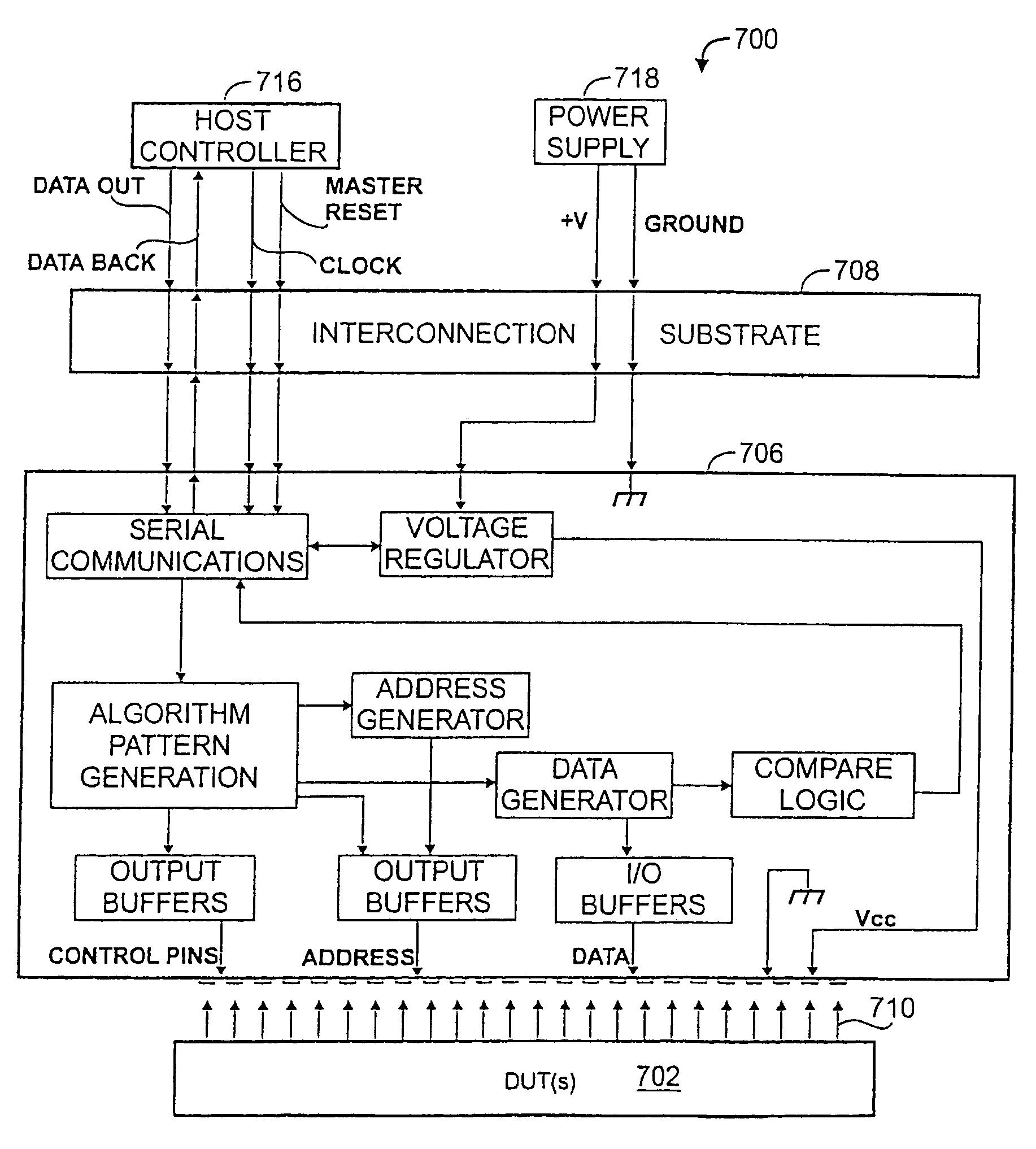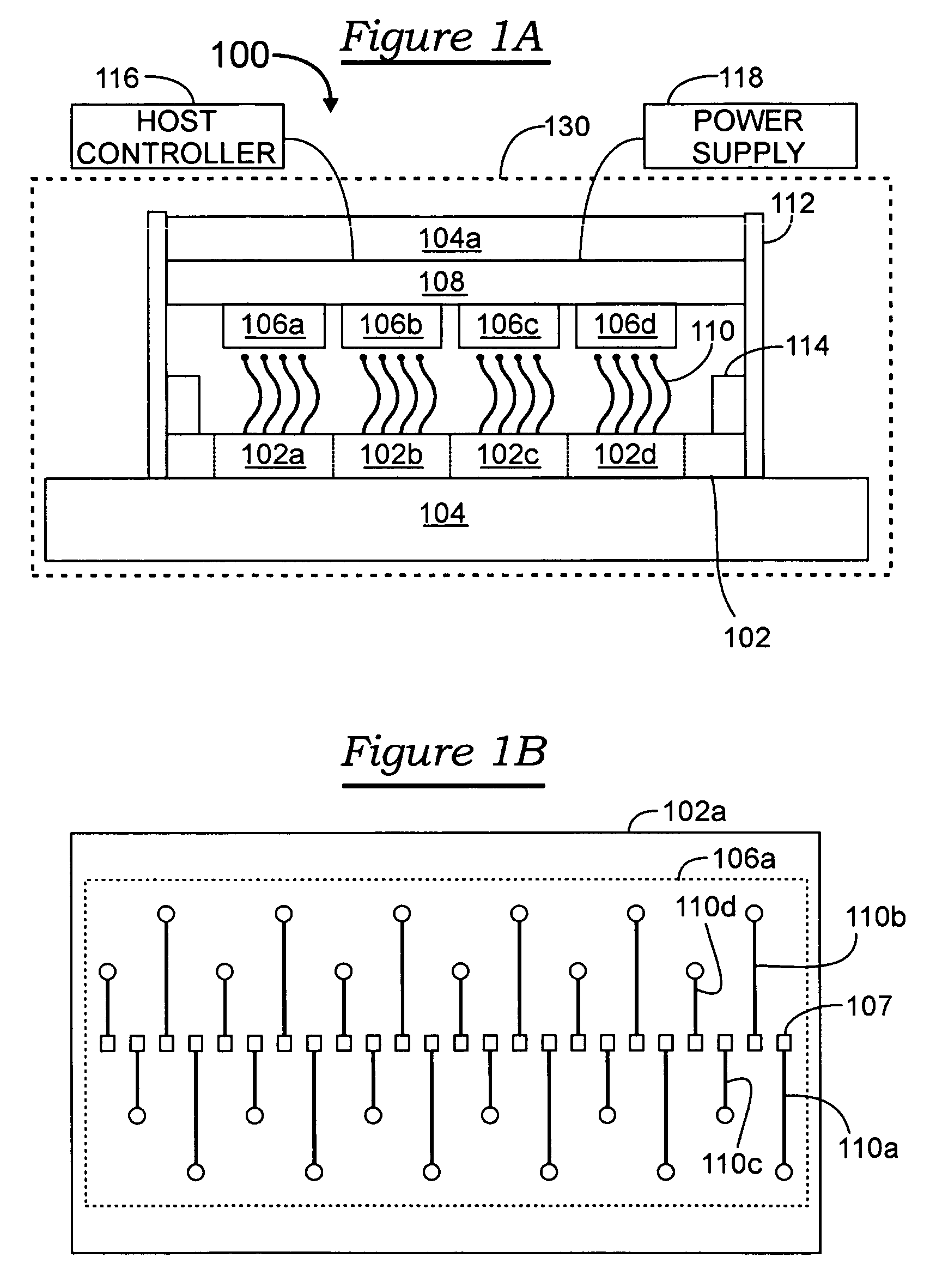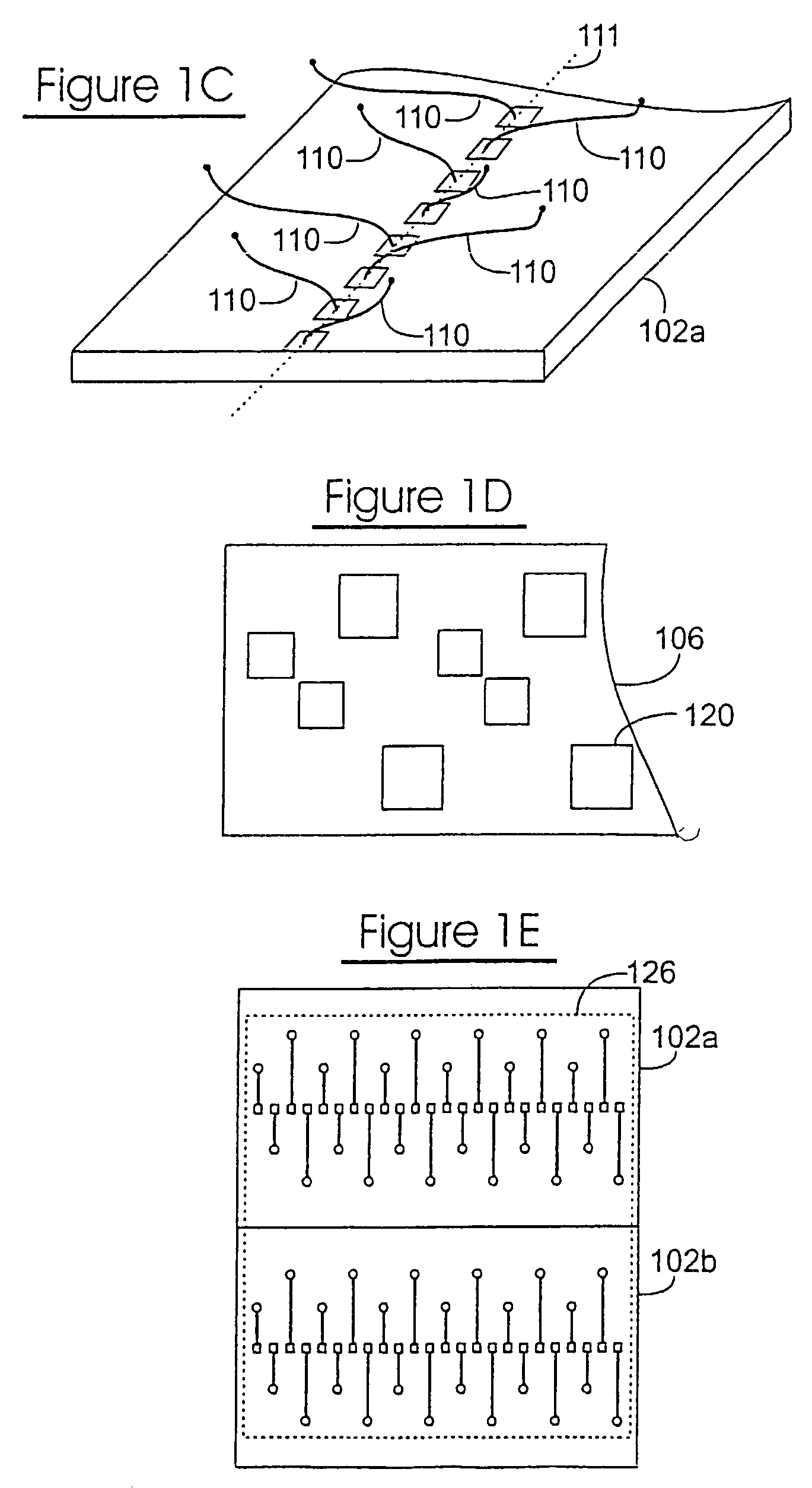Wafer-level burn-in and test
a burn-in and test technology, applied in the field of wafer-level burn-in and test, can solve the problems of many tens of thousands of such contact elements, complex interconnection substrates, and failure to show up initial or not apparent defects
- Summary
- Abstract
- Description
- Claims
- Application Information
AI Technical Summary
Benefits of technology
Problems solved by technology
Method used
Image
Examples
Embodiment Construction
[0073]FIG. 1A illustrates an apparatus 100 for performing a method of wafer-level burn-in and test, according to the invention. A wafer under test (WUT) 102 is disposed (received) on a suitable support, such as a temperature-controlled vacuum chuck 104, such that the semiconductor devices 102a, 102b, 102c, 102d formed on the WUT (the WUT is generally referred to herein as element 102) are facing up (as viewed).
[0074]A plurality (four of many shown) of relatively small active electronic components 106a, 106b, 106c and 106d, such as application-specific integrated circuits (ASICs; referred to generally as element 106) are mounted to a relatively large interconnection substrate (base plate) 108 which is generally of the same size (i.e., diameter) as the WUT 102. For example, the interconnection substrate 108 and the WUT 102 are both eight or twelve inches in diameter. Together, the electronic components (ASICs) 106 and the interconnection substrate 108 constitute a “test substrate”.
[00...
PUM
 Login to View More
Login to View More Abstract
Description
Claims
Application Information
 Login to View More
Login to View More - R&D
- Intellectual Property
- Life Sciences
- Materials
- Tech Scout
- Unparalleled Data Quality
- Higher Quality Content
- 60% Fewer Hallucinations
Browse by: Latest US Patents, China's latest patents, Technical Efficacy Thesaurus, Application Domain, Technology Topic, Popular Technical Reports.
© 2025 PatSnap. All rights reserved.Legal|Privacy policy|Modern Slavery Act Transparency Statement|Sitemap|About US| Contact US: help@patsnap.com



